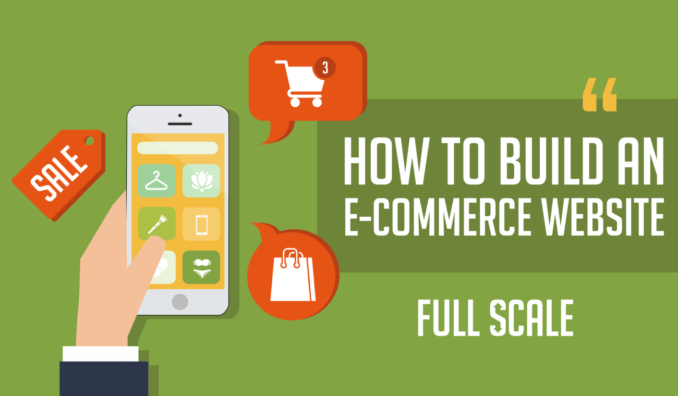Dropshipping has emerged as a game-changing business model, allowing entrepreneurs to dive into the e-commerce world without the need for massive upfront investments. Essentially, dropshipping lets you sell products directly to customers without holding inventory, as suppliers handle the storage and shipping. This post is tailored for those looking to embark on this journey in the UK, offering a step-by-step guide to ensure your dropshipping venture is both profitable and compliant with local regulations.
Research and Niche Selection

Source: bookkeepers.com
Before diving headfirst into the world of dropshipping, it’s paramount to conduct thorough market research. Why? Because the success of your business hinges on choosing the right niche.
Start by identifying current market trends. Tools like Google Trends or niche-specific forums can offer insights into what consumers are currently interested in. Once you’ve identified potential niches, validate them. Check for competition, but don’t be deterred by it. Some competition indicates a healthy market demand.
However, it’s not just about following trends. Consider your passions and expertise. Selling products you’re passionate about can make the journey more enjoyable and give you an edge in marketing. Once you’ve pinpointed a niche, delve deeper to find products that align with current demands and offer good profit potential and of course contact company formation services for further assistance. .
Legal and Business Setup
Operating in the UK requires adherence to specific legal requirements. Firstly, decide on a business structure. Most dropshippers opt for a sole trader setup initially, given its simplicity. However, as you scale, you might consider transitioning to a limited company for liability protection.
Next, register your business with HM Revenue & Customs (HMRC). Depending on your structure, you might also need to register with Companies House. Ensure you’re aware of VAT obligations, especially if your turnover exceeds the VAT threshold.
Lastly, get acquainted with consumer protection laws in the UK. The Consumer Contracts Regulations, for instance, outlines rules around cancellations and returns which you must adhere to.
Supplier and Product Sourcing
Your suppliers are the backbone of your dropshipping business. Platforms like AliExpress, SaleHoo, or Oberlo can connect you with numerous suppliers. However, it’s crucial to vet them meticulously.
Consider factors like product quality, shipping times to the UK, and their customer service responsiveness. Order samples to assess product quality firsthand. Remember, your business reputation is on the line with every product you sell.
Building an E-commerce Website

Source: fullscale.io
Your online store is your business’s digital storefront, representing your brand’s image and values. Platforms like Shopify, WooCommerce, and Magento have revolutionized the e-commerce landscape, making the process of setting up e-commerce sites straightforward, even for those without a technical background. These platforms come with pre-designed templates, integrated payment systems, and support to guide you.
It’s crucial to choose a responsive design, especially considering the surge in mobile shoppers in recent years. A mobile-friendly site ensures that users have a consistent experience across devices. Prioritize creating a user-friendly website, focusing on intuitive navigation that allows customers to easily find products. Additionally, a seamless checkout process reduces cart abandonment and enhances the overall shopping experience.
Product Listings and Descriptions
Your product listings are the first impression customers have of what you’re selling, making them pivotal to conversion rates. High-quality images are non-negotiable. They offer a visual representation, building trust with potential buyers. Whenever feasible, source multiple images that showcase the product from varied angles, giving a comprehensive view. Videos can also be a valuable addition, offering a 360-degree perspective. Crafting compelling product descriptions goes beyond just enumerating features. Dive into the benefits, painting a picture of how the product can enhance or simplify the buyer’s life. Be meticulous with product information, ensuring accuracy in details like size, material, and care instructions. Misleading or vague information can lead to returns and, worse, erode customer trust.
Pricing and Profit Margins
Pricing isn’t just about numbers; it’s a reflection of your brand’s value proposition. Setting the price too high might alienate potential customers, making them feel priced out. Conversely, pricing too low can squeeze your profit margins, making the business unsustainable in the long run. It’s essential to factor in all costs when determining prices.
This includes the product’s base cost, shipping fees, potential customs duties, and other overheads like website maintenance and marketing. Regularly monitor competitors’ pricing strategies, drawing insights without necessarily mirroring them. Remember, being the cheapest can sometimes backfire, leading to perceptions of inferior quality. Instead, focus on offering undeniable value, justifying a slightly premium price point.
Payment Gateways and Security

Source: d6xcmfyh68wv8.cloudfront.net
In the digital age, trust is a currency. Customers need assurance that their sensitive data, like credit card details, are in safe hands. Ensuring your website is SSL certified is a foundational step, encrypting customer data and safeguarding transactions. Beyond encryption, choose payment gateways known for reliability and security.
Options like PayPal, Stripe, or WorldPay are globally recognized, offering not just top-tier security but also a smooth user experience. These gateways support multiple payment methods, from credit cards to digital wallets, catering to varied customer preferences and ensuring a frictionless payment process.
Order Fulfillment and Customer Service
The moment a customer places an order, the wheels of your dropshipping machine start turning. While your supplier is in charge of inventory and shipping, communication remains your domain. It’s imperative to keep customers informed, providing them with tracking information and expected delivery dates. In case of unforeseen shipping delays, proactive communication can mitigate potential frustration. Customer service extends beyond just order fulfillment. It’s about building relationships. Address any concerns or queries promptly, showcasing genuine concern. A resolution that prioritizes the customer’s needs can transform a potentially negative experience into a loyalty-building interaction.
Marketing and Promotion
Having a stellar online store is just the starting point. Driving traffic to it is the next challenge. In today’s digital landscape, social media marketing is indispensable. Platforms like Facebook, Instagram, and Twitter are not just communication channels but powerful marketing tools. They allow for targeted advertising, reaching potential customers based on interests, behaviors, and demographics.
Collaborating with influencers, especially those resonating with your niche, can amplify your reach, tapping into their established audiences. While organic growth is vital, don’t shy away from paid advertising. Start with modest budgets, experimenting with different ad formats and targeting options to discern what garners the best return on investment.
Scaling and Growth

Source: www.cloudways.com
Success in dropshipping isn’t the endgame; it’s a stepping stone to further growth. As your order volume increases and profits become more consistent, consider diversifying your product range. This not only caters to a broader audience but also mitigates risks associated with relying on a limited product set. Streamline operations for efficiency, perhaps integrating automation tools or hiring additional help. Exploring new marketing avenues or platforms can further boost visibility.
Consider multichannel selling, leveraging platforms like Amazon or eBay, which come with their massive user base. However, in this quest for growth, never sideline customer satisfaction. It’s the cornerstone of any sustainable business. Happy customers don’t just return; they become brand ambassadors, championing your business in their circles.
Summary
Starting a dropshipping business in the UK, while challenging, offers immense potential for those willing to put in the work. With the right research, suppliers, and marketing strategies, you can carve a niche for yourself in the bustling e-commerce landscape. Happy dropshipping!





